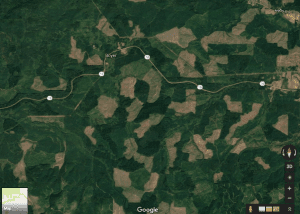 I am heading from Portland to Coos Bay, Oregon. Having some extra time, I drive the back roads through what seem like endless verdant forests. The road winds through valleys next to streams, and the forests climb the hills and mountains to the ridgelines. It’s a good day.
I am heading from Portland to Coos Bay, Oregon. Having some extra time, I drive the back roads through what seem like endless verdant forests. The road winds through valleys next to streams, and the forests climb the hills and mountains to the ridgelines. It’s a good day.
The next time I make the same trip, I fly in a small plane. Looking down out the window, I am shocked. Following a good portion of the same route, I see what I couldn’t see from the ground. Beyond the ridgeline are thousands of acres of clear-cut forest. The road looks like a river of green in a desert. A boundary has been preserved, but why?
For one thing, a clear-cut is really ugly. Why not protect the public from this ugliness?
Another reason might be that corporations like to keep bad news away from the public. They also don’t like to account for indirect costs to the environment, such as pollution. These businesses claim they are “over-regulated”. Yet, like the tobacco and oil companies, they aren’t going to tell you the whole truth. It’s not in their economic interest. They tell us that “jobs” are always the most important thing. Jobs are important, but not to the exclusion of our health, our environment, or ultimately our future.
Cutting trees and deforestation are a complex issue. Forestry in Oregon provides about 45,000 jobs, which equates to roughly 2.2% of its workforce. Oregon tries to balance economic benefits against environmental issues. The environmental issues include:
- removing wildlife habitat
- stream pollution
- harming salmon habitat
- degrading drinking water
- and destroying scenery and the quality of life that draws people to Oregon
Now we need to add another, depleting the carbon stores and adding to global warming. It’s a consequence of timber cutting that isn’t typically included in the “costs.” When we look at the benefits of forestry we simply ignore these costs. We shouldn’t. We should be skeptical of what big businesses tell us.
In 2013, the US exported about 6 million cubic meters of wood to China*. (This is not the total amount of wood cut, only about 10%.) The CO2 content of this wood equates to 6,062,099 tons per year. * USDA Foreign Agricultural Service
There’s a solution for Oregon when the trees are gone. The wine country of California is gradually warming. This is documented by the wineries and grape producers. Grapes need a certain climate to produce good wine. Now they can simply migrate northward to Oregon when the trees all are gone.
So that’s it. In twenty years will Oregon be growing grapes on clear cut land? Most likely an exaggeration, but there is some truth to it.
There’s also the argument that trees are renewable and can be harvested. But how do you “harvest” a 200-year-old tree? I don’t believe you can truly harvest anything you can’t regrow in a couple of years, much less a lifetime. Trees do recycle. They release their carbon in a cycle. That’s true. The problem is that the world is rapidly being deforested from Oregon to the Amazon to Indonesia. Planting trees and preserving forests is one way to slow global warming. (A couple of organizations that do this are Stand for Trees and Plant for the Planet.)
So when you think about your carbon footprint and the total costs of the global warming, think about the trees. Maybe we should add a cost to the harvesting of trees? Buy a new house made from wood and pay your fair share to offset global warming?
I know some will never look behind the curtain, and certainly not beyond the ridgeline. Some don’t even see the trees. They just see the green.
Savor the Earth!
Hobie,
Lee Hobart Stocking
SkyWaterEarth.com
hobart@skywaterearth.com
651-357-0110 (C)

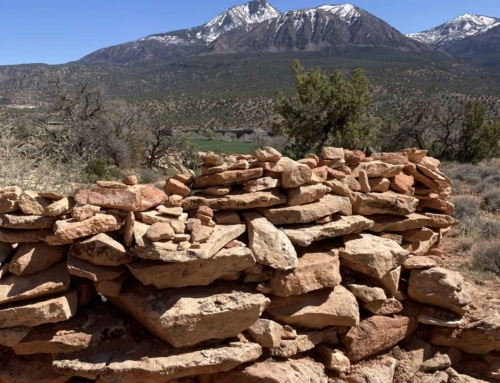
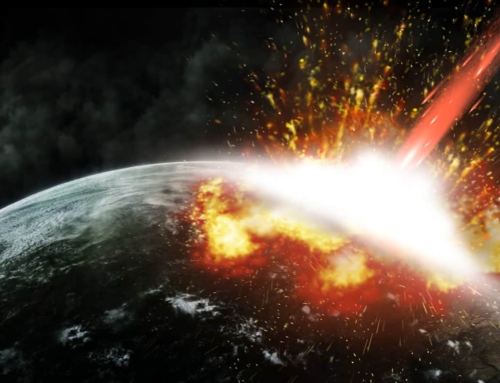
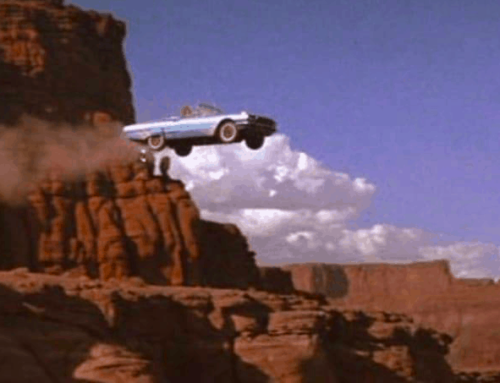

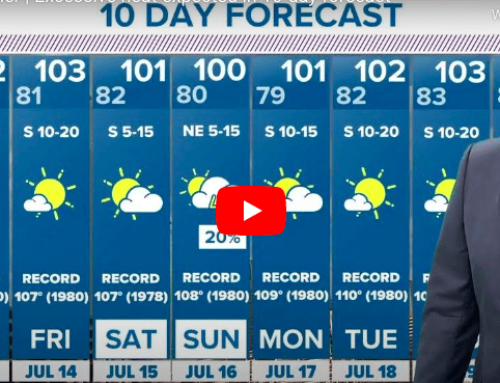

Leave A Comment